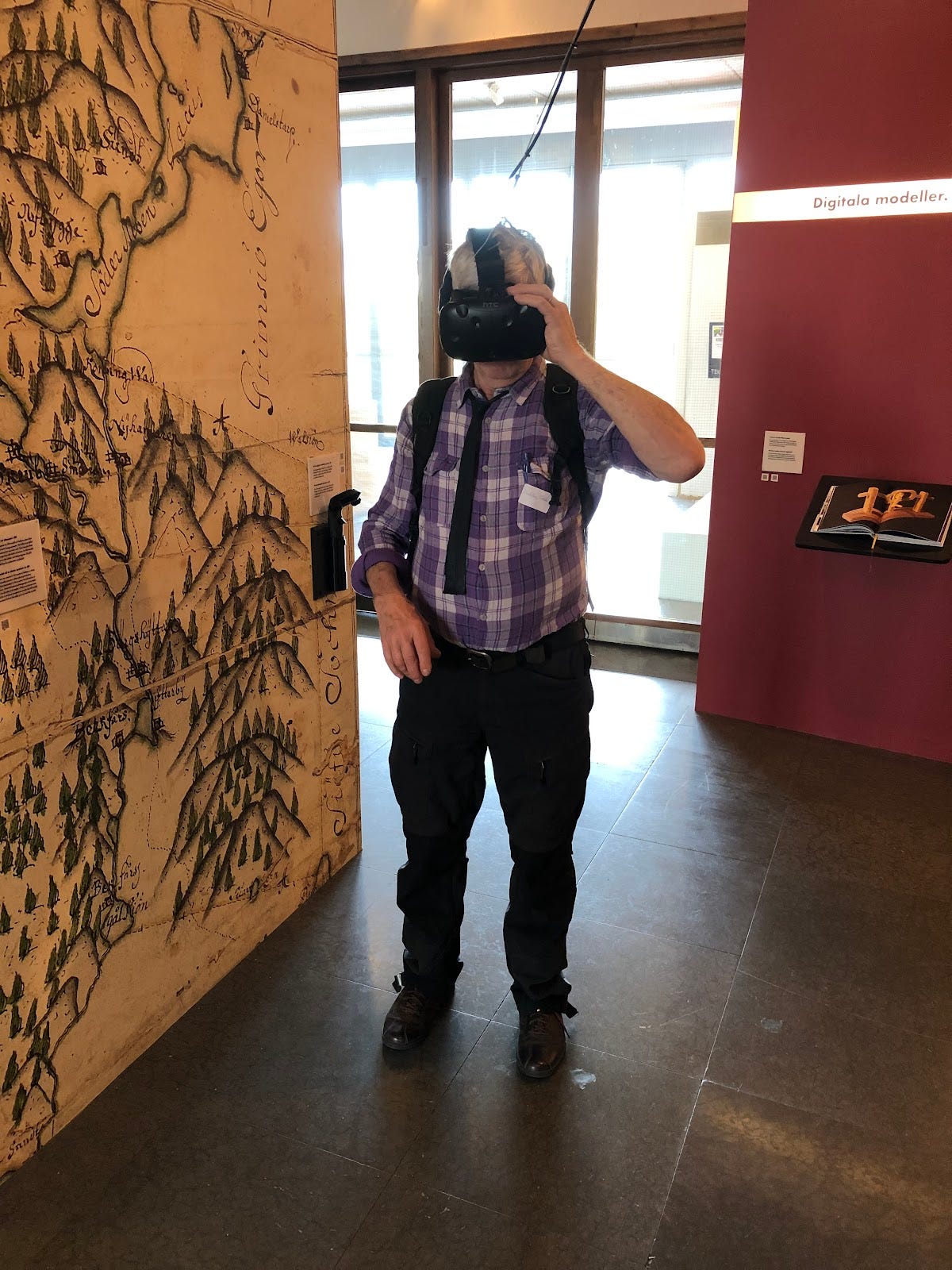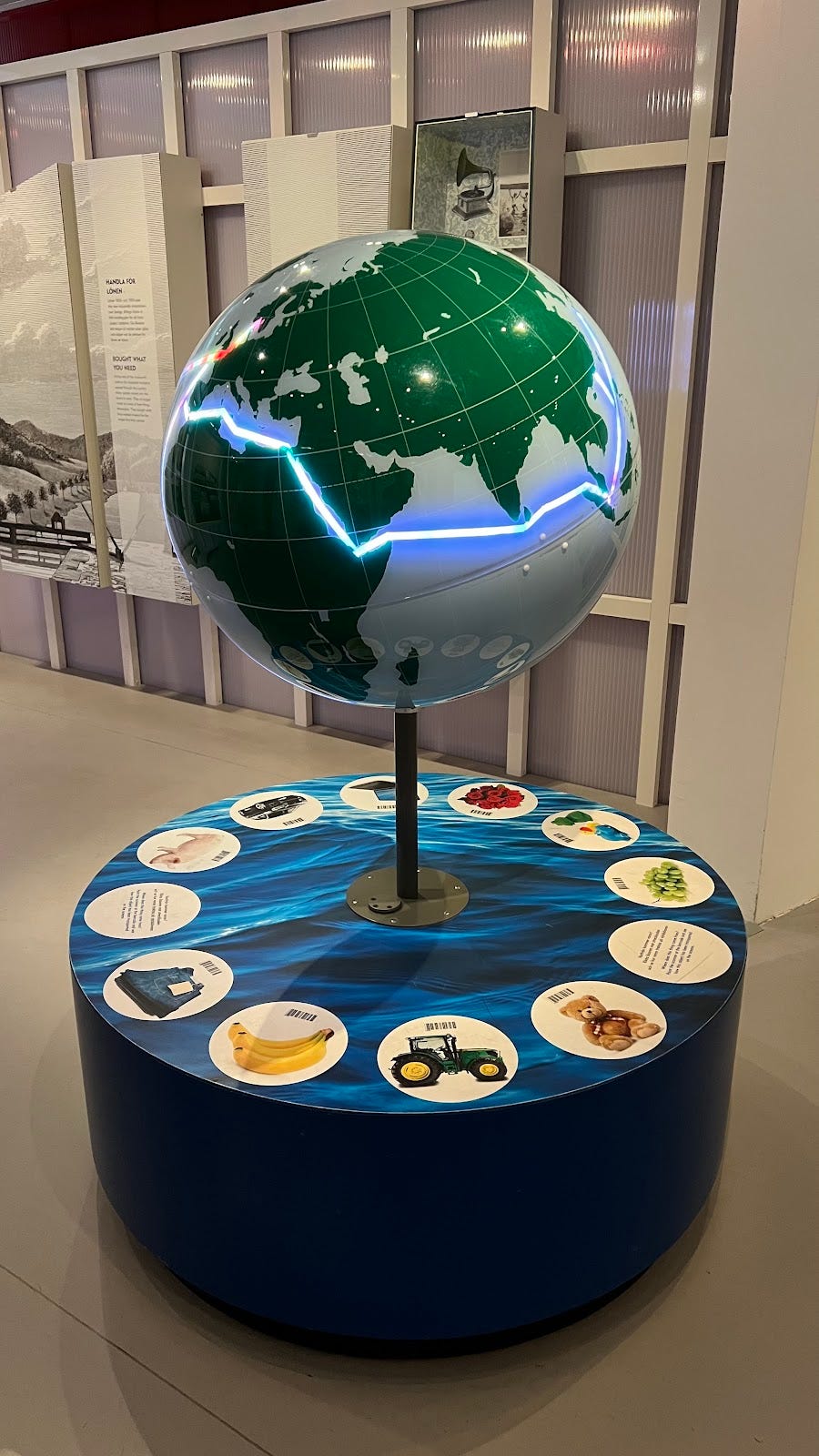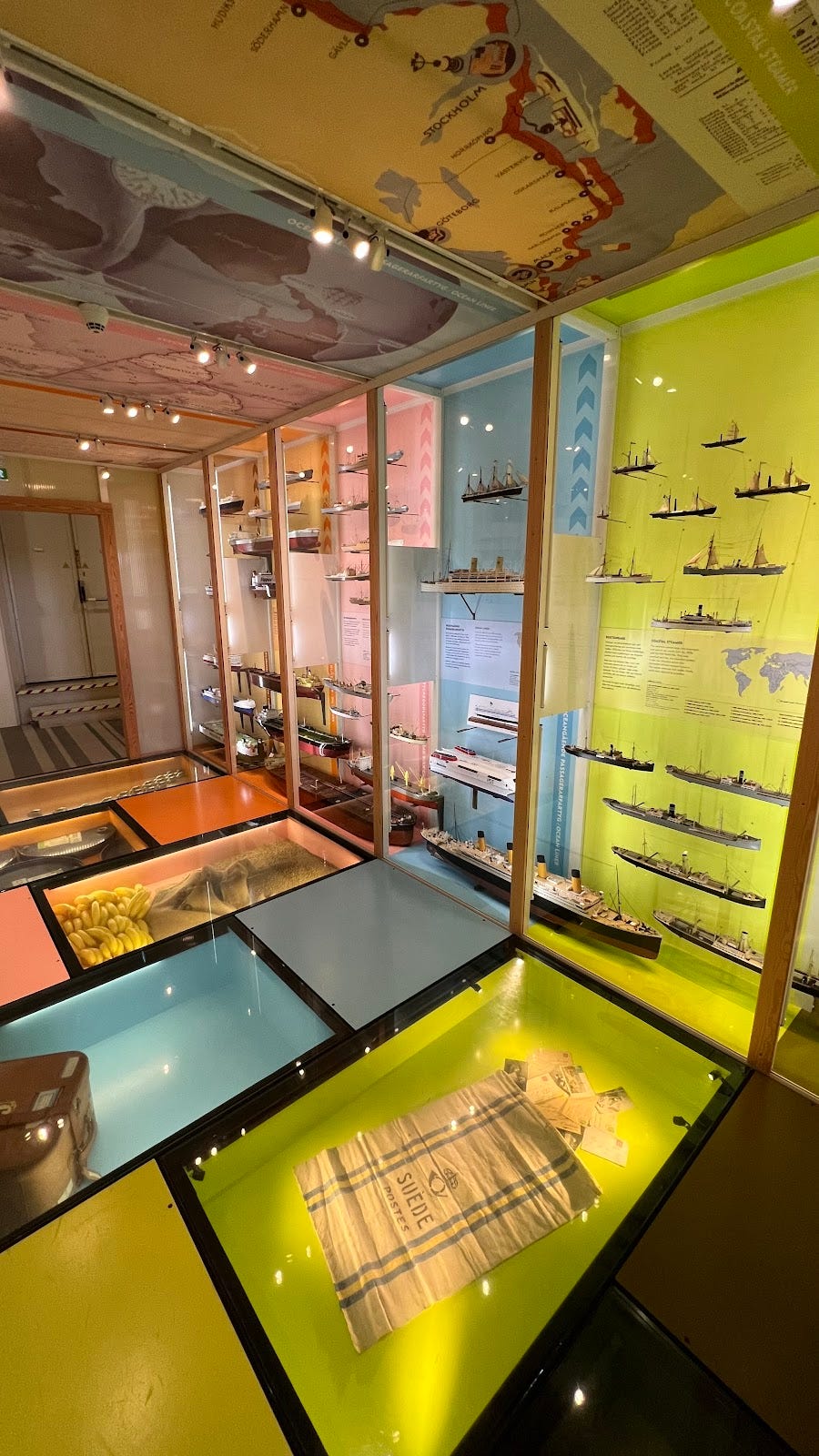Museums are knowledge-bearing and knowledge-preserving institutions. It is something that is part of the very DNA of museums.
At the same time, museums need to deal with a reality with new technology and the possibility of incorporating this into their exhibitions. One such adaptation is that the museums can offer so-called immersive experiences, through, for example, augmented reality (AR) or virtual reality (VR).
On March 27-28, 2023, the Swedish National Heritage Board (Riksantikvarieämbetet) organized a network meeting for immersive media. The presentations from the network meeting are published in a separate playlist on their YouTube channel.
Tohbbe Lindblom from Brunnsmuseet tests VR headset at the Technical Museum on May 17, 2019, in connection with the workshop on Digital cultural heritage. Image by Gustav Fröjdlund.
It is something of a trend within museums in Sweden that museums are asked to look at other industries in how they coped with digitization and a changing media landscape. A new reality probably requires adaptations in order to maintain the relevance of museums in the present. But sometimes the choice of precedents can be tricky, and lead museums down strange paths.
Certain problems arise in the meeting between the conservation museum and the new immersive media. Museums have a long experience of creating analogue products, not least exhibitions. There is a certain pressure for change on the museums that they should also become experts in digital service development. The problem is that digital services are rarely permanent. Rather, these are by definition highly temporary media.
There are a number of technical and economic factors that risk seriously limiting the long-term availability of these services.
The technical factors are based on the need to constantly ensure that their services function as intended and meet technical requirements. Anyone who has ever managed any kind of IT system knows that an update at one end risks breaking the connections to another, connected part. The 360° navigation services are often linked to the museum's collection management system. An update in the management system can cause problems with broken connections. Anyone who has not managed their system for a long time can soon notice that there is much that does not work as it did once upon a time. In addition, there may be demands for increased accessibility that require adaptations of the service. A digital service that is available to the public is never completely finished, this also means that the museum can never put the finishing touches on a service that must continue to be kept active.
The economic factors after a fully developed service are linked to labor costs for ongoing maintenance, as well as license fees linked to the technical systems used and to storage space on the server. These costs are justified to a certain extent, but as everyone knows, there is an upper limit to how long something should cost money. Especially after a time when the service is no longer used so often, it can be difficult to justify keeping it active when the alternative is to close the service and be able to prioritize development and financial allocation of new projects.
However, there are factors that the museum can take into account already in the planning stage of its services, which can facilitate a more permanent access. These factors are:
The museums should, as many institutions have already realized, prioritize development "in-house" with their own staff rather than hiring an external company for the work. It must be enough to offer the limited quality that own staff can manage to achieve, because the ability to maintain the service is absolutely essential.
The museums need, as far as possible, to avoid fixed ongoing expenses linked to license fees. Instead, priority should be given as far as possible to the use of free, open source applications. It is a more cost-effective alternative and creates potential economies of scale by allowing many actors to contribute to tuning and maintaining the underlying technical systems. Think that staff both inside and outside the museum can contribute to developing the services that the museum benefits from! Here too, it may be worth the limited quality that may result from opting out of the proprietary, commercial systems.
Museums should, to the extent possible, provide the content of their immersive media with a free and open license, such as Creative Commons. Consider that the alternative to completely closing a service would be to let it live on through voluntary reuse. I think that the big central museums should consider the possibility of thinning out their older services by "adopting" them to, say, some non-profit working life museum or friend's association. Wasn't that a better option?
The National Maritime Museum (Sjöhistoriska) in Stockholm is one of my absolute favorite museums. An exhibition that was at Sjöhistoriska is the now dismantled exhibition The Travellers, which was inaugurated on October 8, 2016. I personally visited this exhibition during October 2021 and can thus attest that it has existed for more than five years.
Before Sjöhistoriska dismantled the exhibition, a virtual tour of it was created. This immersive experience was demonstrated during a recorded lecture during the immersive media networking event I mentioned earlier.
The circumnavigation of the globe, from the exhibition Travellers. Image by Gustav Fröjdlund (CC BY).
It is easy to think that the value of this immersive experience has only increased now that the physical exhibition is no longer available to visit. After all, it existed for more than five years in physical form! Still, it is a somewhat depressing fact that the virtual exhibition, barely a year and a half after I was there, has closed down. The shutdown was justified by the fact that it was about contractual issues (= economic factor) and availability (= technical factor). It is a little interesting that the physical exhibition was up for more than five years, but the digital one – an extension of the physical edition – disappeared shortly afterwards!
Sound-equipped booths, from the exhibition The Travelers. Image by Gustav Fröjdlund (CC BY).
Since the National Maritime Museum had actually created an immersive experience over its previous exhibition about world sailing that they themselves could no longer justify keeping active, it would be interesting to think about if there were other potential actors who saw value in continuing it, perhaps have the ships that were used any interest association that wants to continue telling the story of how the ships were used. Perhaps there is a working life museum about the company that carried out the world voyages. With the use of open source code and a free license, there are good conditions for even a small museum to be able to provide the necessary resources to prioritize continued provision of the service. Sjöhistoriska also has a friends association, Sjöhistoriskas Vänner, which could possibly see value in continuing to make the digital exhibition available.
The problem with the immersive media is that they currently do not belong in a museum. This is because they do not fit well enough into the museums' DNA of being long-term knowledge preservation institutions. The temporal long-termism needs to be protected in the digital as well. The digital should complement the physical space by offering an extension in accessibility in both space and time. We as visitors should not encourage the museums to develop services that they only provide for a shorter period of time.
To link back to other industries; on a streaming service for films and series there is a certain acceptance that the supply is temporary, after the contract expires the content is renewed. If you look at SVT, the Swedish public service company and their offer, I believe that the museums should not primarily imitate their play service (SVT Play), but rather Open Archive - where the digital range is often available for a very long time. There are both economic and technical factors to prioritize in order for this to become possible to a greater extent, not least through the promotion of open source code and free licenses.




